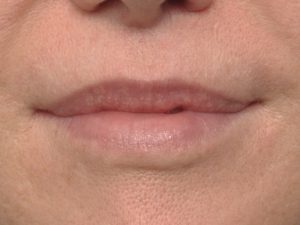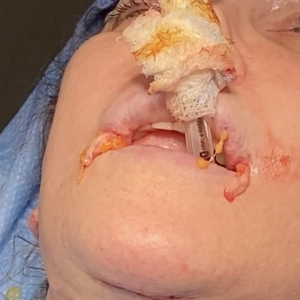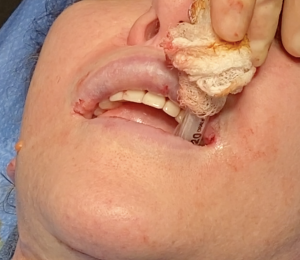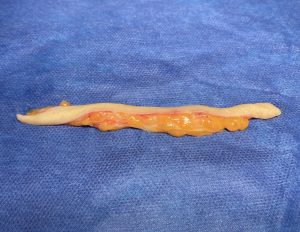Background: Lip augmentation is one of the more popular uses of injectable synthetic fillers and has been so for more than two decades. They offer an immediate and non-surgical method of lip augmentation that works fairly well when adequate vermilion height exists. But it does require periodic injections to maintain the effect and injections into the lips is not the most comfortable.
As a result the concept of a permanent form of lip augmentation has always been appealing and multiple methods have been used to achieve it. Permanent fillers (e.g., silicone), fat injections and dermal grafts have all been used with varying successes as augmentation materials. Autologous fat is the most convenient material and, while easy to harvest and inject, has a a very difficult time of surviving and maintaining volume in the mobile and delicate lip tissues.
Another form of fat for lip augmentation is the dermal-fat graft.While having been a type of graft that has a long history in plastic surgery it rarely is used today as it has largely been forgotten amongst other options. It also requires a graft harvest and a resultant scar in its wake which is also not appealing to many patients. But if the patient has an existing scar of adequate length the scar problem with the use iof a dermal-fat graft is negated.





Case Highlights:
1) One form off autologous lip augmentation is with the use of dermal-fat grafts.
2) Dermal-fat grafts for the lips are a good alternative when the patient has failed prior fat injections, wants an autologous approach and has reasonable vermilion show.
3) Dermal-fat grafts are threaded into the lips using a curved grasping forceps.
Dr. Barry Eppley
World-Renowned Plastic Surgeon





